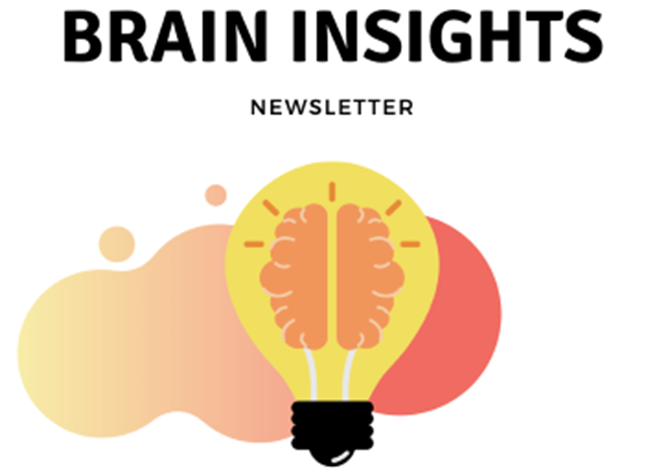BNA Annual General Meeting 2025
1st April 2025
30th May 2023
 Brain Insights is the dedicated student section published in the British Neuroscience Association (BNA) Bulletin. It represents the voice of the BNA student: written by students for students. Selected articles are reproduced here on the BNA website.
Brain Insights is the dedicated student section published in the British Neuroscience Association (BNA) Bulletin. It represents the voice of the BNA student: written by students for students. Selected articles are reproduced here on the BNA website.
In this article Eleanor Doherty, 2nd year undergraduate Neuroscience with Psychology student at the University of Aberdeen, provides an overview of PTSD and its therapeutic treatment from a neurobiological perspective.
Post-traumatic stress disorder (PTSD) is a complex psychiatric disorder caused by exposure to traumatic and life-threatening events [1]. PTSD is not only a debilitating condition but is oftentimes chronic and presents itself with a variety of symptoms such as nightmares, flashbacks, intrusive thoughts/memories, dissociative states, irritability, hypervigilance, and negative mood [2]. Currently, there is a focus within neuroscience research on the neurobiological changes associated with PTSD, and the potential therapeutic strategies for both the treatment and prevention of this disorder.
To begin, it is widely known that PTSD results in neurobiological changes. These changes are associated with the dysregulation of fear and emotions [2]. Functional, structural, and biochemical changes within the prefrontal cortex (PFC), amygdala, and hippocampus have been widely studied. These regions of the brain form a network for the storage and expression of memories related to fear [3] and are additionally related to conditioned fear responses and learning and memory processes [4]. Prolonged exposure to stress has been shown to result in abnormal glucocorticoid signalling, increased extracellular glutamate and excitotoxicity, and neuroinflammation in the PFC and the hippocampus [2]. Hippocampal abnormalities due to PTSD are of particular interest due to the role of the hippocampus in memory and stress regulation, and it has even been hypothesised that changes to the hippocampus are the root cause of PTSD symptoms. Hippocampal volumes have consistently been found to be smaller in individuals with PTSD, potentially due to the excessive release of glucocorticoids released due to chronic stress [5]. Finally, PTSD is also associated with neurotransmitter abnormalities, involving neurotransmitters such as glutamate, serotonin, and norepinephrine. Individuals with PTSD have been found to have decreased levels of serotonin, and changes in glutaminergic signalling. Hyperreactivity of the sympathetic nervous system, resulting in the increased release of norepinephrine, has been found in those with PTSD, resulting in hypervigilance, flashbacks and nightmares related to the disorder [1]. The finding of these neurobiological changes with PTSD has resulted in numerous proposals for therapeutic strategies.
Currently, while there is no definitive cure, there are a number of potential psychotherapeutic and pharmacotherapeutic strategies for both the treatment and prevention of PTSD. The success of these treatments very much depends on the phenotype of the individual disorder, though further biomarker research is needed for phenotype classification and therapeutic strategies [6]. Psychotherapy is considered the first line of treatment, followed by pharmacotherapy. Psychotherapeutic strategies include cognitive behavioural therapy (CBT), and prolonged exposure (PE) treatment. CBT is used in patients with PTSD to aid in the management of symptoms. On the other hand, PE has been found to increase hippocampal volume in patients with PTSD, though the largest improvement was found in patients with a greater hippocampal volume prior to PE treatment [7].
Furthermore, there are several pharmacotherapies of interest for PTSD. For the prevention of PTSD, these include ????-adrenergic receptor blockers and hydrocortisone, though neither is currently in clinical use. The ????-adrenergic receptor blocker propranolol is currently being studied for the prevention of PTSD due to its blocking of norepinephrine at adrenergic receptors. Norepinephrine is associated with the encoding of traumatic experiences and fear as well as the fight-or-flight response [6]. Additionally, the administration of hydrocortisone shortly after a traumatic experience is hypothesised to prevent the development of PTSD, however, more studies are required for this to be determined [2].
For the treatment of diagnosed PTSD, pharmacotherapies such as selective serotonin reuptake inhibitors (SSRIs), antipsychotics, and ramelteon are significant. Currently, only the SSRIs paroxetine and sertraline are FDA approved for the treatment of PTSD, though many practices include a wider range of SSRIs as the first choice of pharmacotherapy for PTSD. These drugs aid in increasing levels of serotonin and aid in the negative mood often experienced with PTSD [1]. There has been a surge in research into the potential treatment of PTSD with atypical antipsychotics such as quetiapine, which may be used as a monotherapy in patients with PTSD with psychotic symptoms. Finally, ramelteon, a melatonin receptor-selective antagonist approved for clinical use in insomnia, has been found to be successful in rodent models of PTSD for the treatment of PTSD symptoms [8].
To conclude, PTSD is a psychiatric disorder caused by exposure to traumatic or life-threatening events which result in neurobiological changes in affected individuals. There is no current cure, and individuals with PTSD experience a wide range of debilitating symptoms which impact their day-to-day life. However, there are numerous therapeutic strategies to be utilised for both the treatment and the prevention of PTSD. These strategies include psychotherapy and a wide range of pharmacotherapies. With further research into the neurobiological changes and the impact of these therapeutic strategies as well as potential therapies, it can be hoped that the future treatment and prevention of PTSD will reduce the impact of the associated debilitating symptoms.
References